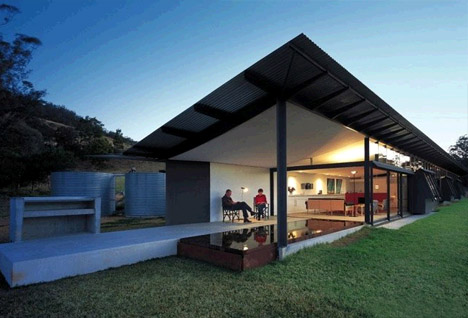Archives for 2011
Why Apples Are Better Than Oranges [Infographic]
Inhabi matches renters and landlords eHarmony style
Landlords and renters, sittin’ in a tree…
Inhabi.com just launched in beta in Portland and Boise, and they call themselves the eHarmony for renters and landlords. Users create a profile describing their ideal rental and landlords search renters which is how the magic happens. Jameel Farruk, Inhabi CMO told AGBeat, “Our company is taking the traditional newspaper-classified listing model and turning it on its head.”
The company started Inhabi because they say they’ve seen from both sides of the table how difficult it can be for landlords and renters to be matched, and they claim they are the “easiest way to find an apartment online.”
Inhabi aims to reduce a renter’s stress in hunting, saying they simplify the process not only by providing high quality listings (read: no false advertisements a la Craigslist) but by being a conduit for effective communication with a potential landlord. They tell renters to pull up a comfy chair because their “hunt for a new apartment is now on autopilot.”
Traction in the rental technology sector
Inhabi seeks to be a disruptive force in the residential rental industry, opening doors for renters and landlords, and they’re not alone. We reported yesterday that ApartmentList has launched as the Pandora recommendation engine of real estate listing portals, and others are rumored to be on the horizon. Rentals are complicated as multi-family is often guarded with their information not only because rent rolls can change by the hour and are used exclusively on an internal basis, but landlords with single units often don’t input property information anywhere effective.
The rental technology startup scene is starting to have the energy and traction of the residential real estate world four years ago- the ideas are big, fresh, life-altering, but most importantly, disruptive. Since the rental industry has a movie to watch and they know the ending (read: Zillow, Trulia, Movity, etc.), will they learn from the lessons of residential sales tech companies and aim to be acquired, or will the free spirit of the scene push them to stay small, run parallel to each other and push for transparency?
Artist Condos Hover Above Communal Courtyard
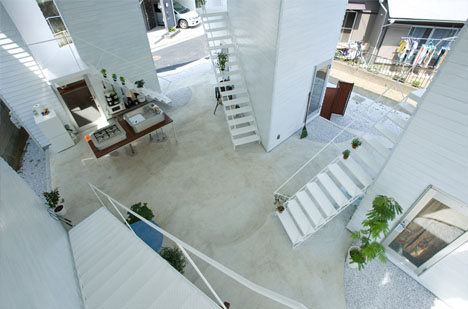
This Japanese dwelling complex embodies the best of both private and public living: four lofted apartments with privacy and views above, and a space for collaboration, gatherings and exhibitions in a covered outdoor courtyard space below.
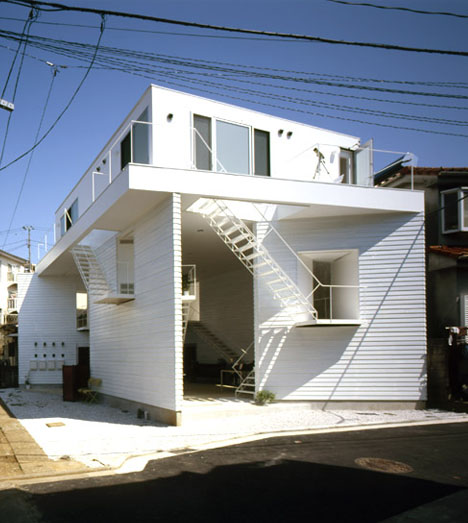
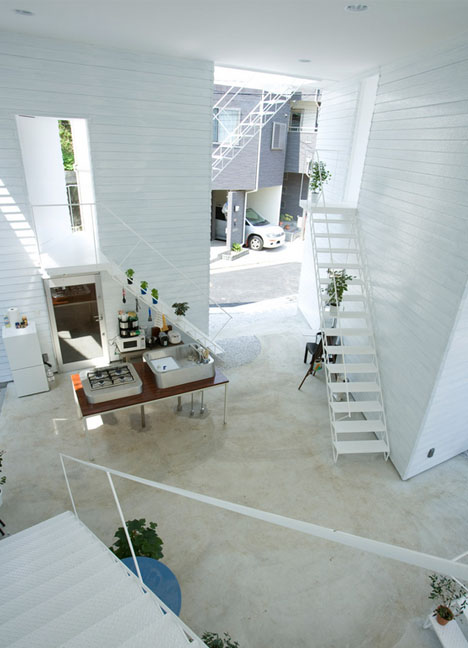
Support functions (such as storage and restrooms) are situated on the first floor to allow occupants maximum leisure, cooking and sleeping use of their respective upstairs areas via small living-and-bedroom zones and kitchenettes (supplemented by shared appliances below).
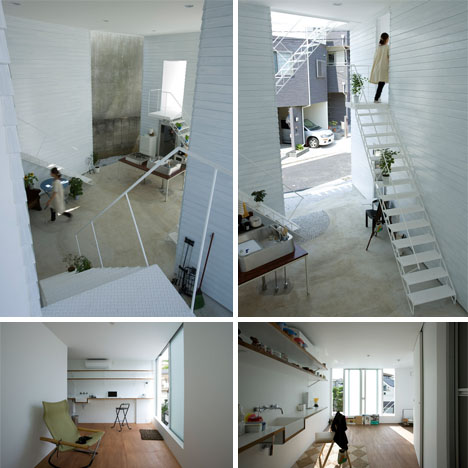
A set of four odd-angled masses form the base for each lofted apartment unit in turn, while partially framing the open-air area below, creating a semi-enclosed common area while leaving it partially public as well.

Each underlying volume has a distinct shape and relationship to the site, creating a sense of artistic individuality within a common architectural language. They are also each accessed via a winding outdoor metal staircase that puts the occupant at once on display but also allows for lovely views down into the center of the complex.
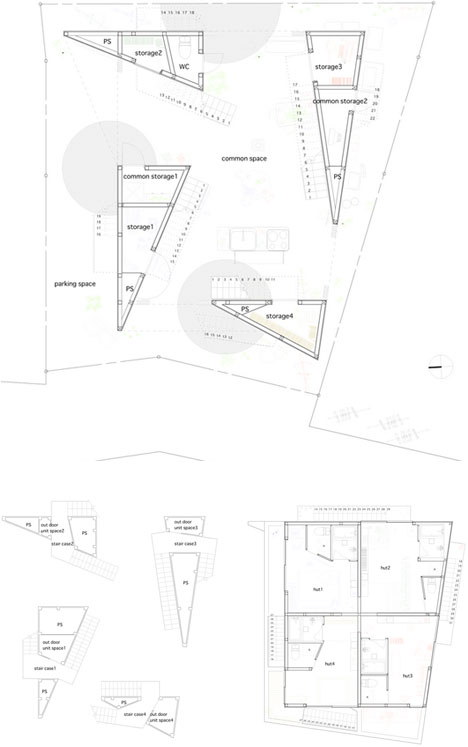
At the same time, there is a structural simplicity to the actual lofts above, making the final project less expensive and more familiar when it comes to core beginning-and-end-of-day functions. Design by ON design partners and located in Kanagawa, Japan.
See-Through, Touch-Screen Tablet Renders Interiors in 3D
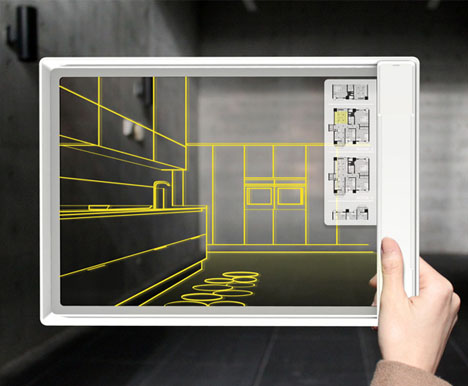
It has taken from hundreds to thousands of years for architects and designers to perfect the art of translating from two-dimensional images to the three-dimensional world and back again. Augmented-reality technologies like this, however, promise new quantum leaps in matters of months.

A see-through touch screen will allow users of the (still pre-production)Â IRIS Tablet to overlay physical spaces with digital renderings ranging from plans and sections to highlighted perspectives, all paired for easy identification of locations and angles in multiple dimensions.
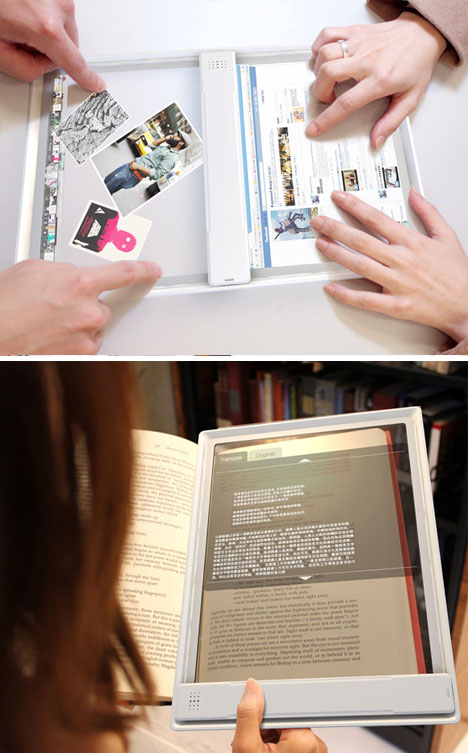
A combination of geo-positioning and pattern recognition help the device recognize its own stance within a structure, projecting too-be-added components onto the screen for an up-close-and-personal look at proposed renovations and additions.
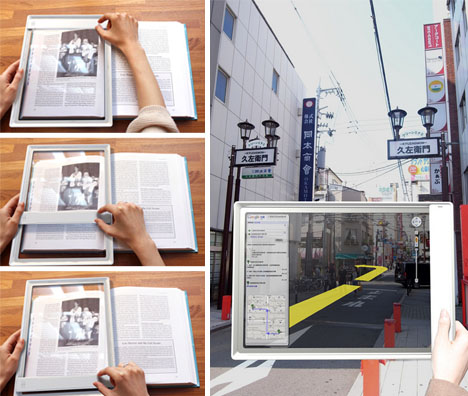
Scanning (via a side-to-side movable slider) and editing images (right on the clear touch screen) and text up close are possibilities, too, as are various way-finding techniques that go a step beyond real-time 2D maps already widely available.
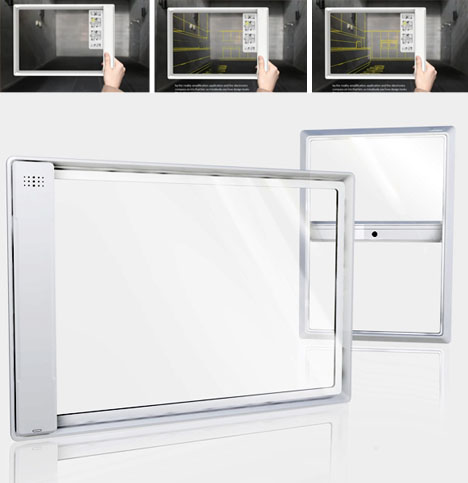
The see-through surface is more than a transparent window, it is a basis for modeling, exploring and interacting with intangible ideas and unrealized futures.
The Great Prosperity – The Great Recession!
World Trade Center rising time-lapse [video]
This video, described as a “…time machine [that] has production values on par with Inception, and like that thriller it might leave you wondering which dream level we’re on," by The Architect’s Newspaper, was shown at a press conference meant to attract tenants to the new building and held by Mayor Bloomberg, architects Daniel Liebeskind and Michael Arad and developer Larry Silverstein.
Australian Architect Crafts Regional Homes
Sensational architecture makes headlines as if its architects were one-man shows, when they are more frequently the the front man for a much larger operation. Though he has won awards including the Pritzker Prize and AIA Gold Metal, Glenn Murcutt spends his time designing area-appropriate buildings to suit local needs rather than seeking out the spotlight.
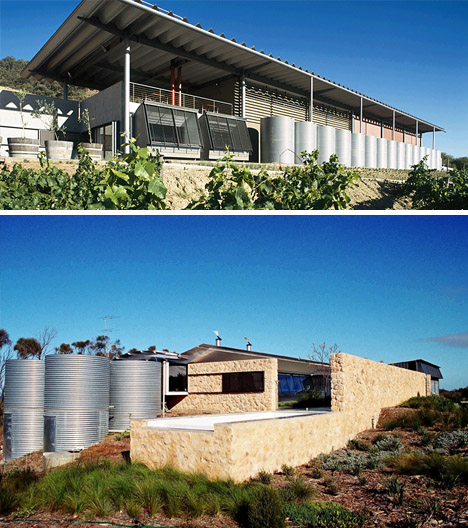
He has no signature style as some architects do, but there are common themes to his work: simplicity, efficiency, and a respect for the beauty and primacy of the natural environments in which his works are to be built.
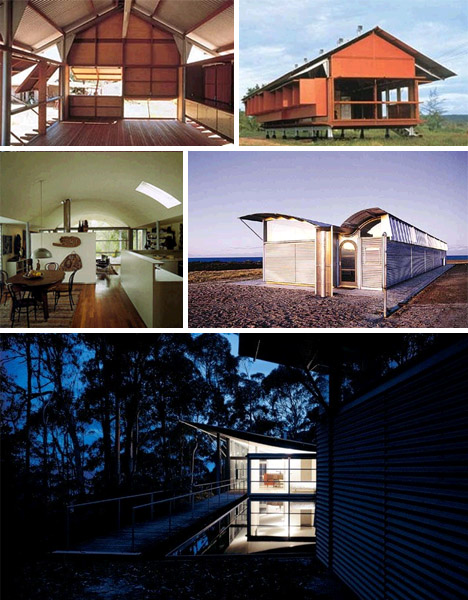
His pragmatic approach leads to the frequent use of simple and durable materials like corrugated metal, used in rainwater catchment barrels, on roofs and as siding (in addition to glass, wood, stone and brick as appropriate). Single-story, open-air dwellings, often on stilts, also reflect his region of practice: mainly Australia, with hot weather but also prone to floods in places.
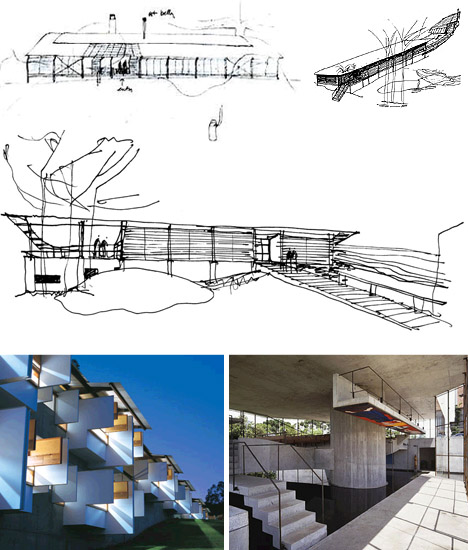
Born in London and raised in New Guinea, taught of Henry David Thoreau as well as Mies van der Rohe, his architecture reflects modern sensibilities and an appreciate for simple living with the pragmatic differences between geographical regions.
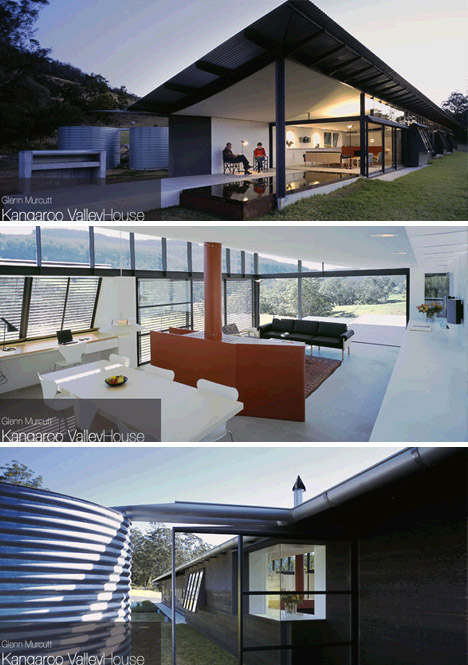
If his life story and work has a message, perhaps it is this: don’t lose track of what you want to do or what you are good at doing … his work has become famous, certainly, but he remains a single-architect firm and sticks to regions he understands and can best design for (all the while with a never-ending list of clients wanting him to work for them).
Tchaikovsky Time-lapse
[pb_vidembed title=”” caption=”” url=”http://vimeo.com/27953845″ type=”vem” w=”480″ h=”270″]











